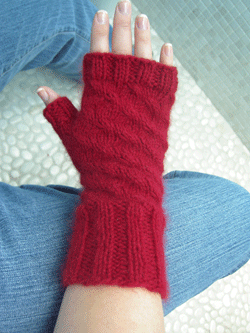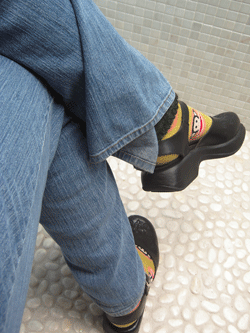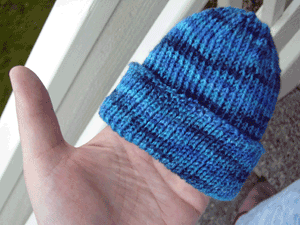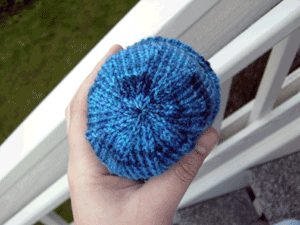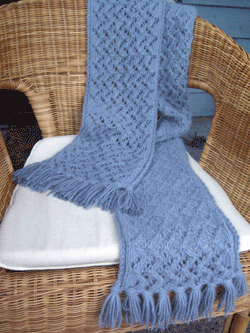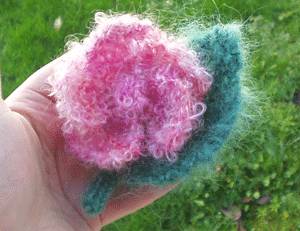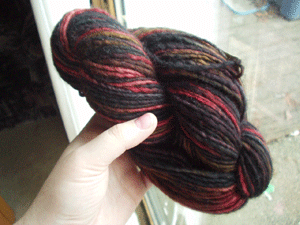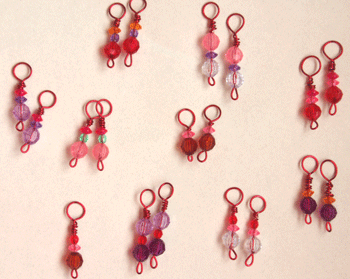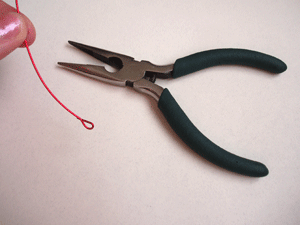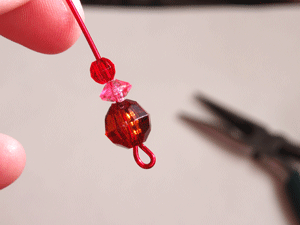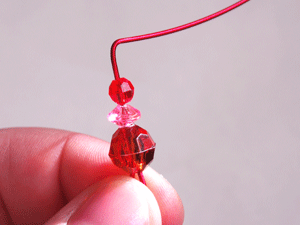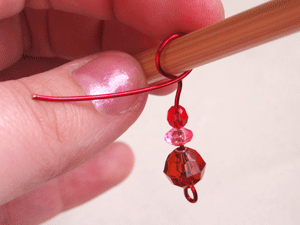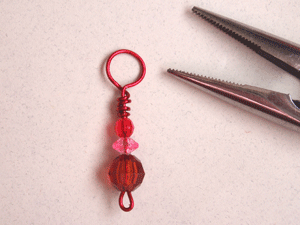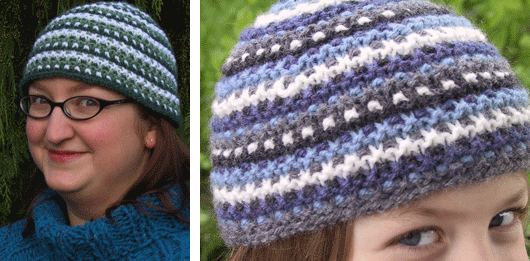
Materials–
1 skein Lamb’s Pride worsted weight yarn (mohair/wool blend)
size 8, 16 inch circular needle, plus double points
stitch marker
size E crochet hook for edging
embroidery needle to weave in ends
Gauge–
18 stitches and 21 rows in stockinette stitch
Stitch Guide–
LSYO- Lift Stranded Yarns Over. With right needle, from front to back, lift the two stranded yarns. Knit the next stitch, which will be the center of the three knit stitches. Pick up the stranded yarns with left needle and lift off of right needle.
TDS- Triple Decrease Sequence. (This only happens on either round 5 or 11 in pattern, when the strands need to be lifted. This will begin at the first of the three knit stitches). Lift the two stranded yarns in the usual way. Slip 1st knit stitch as if to knit, knit next 2 knit stitches together, pass slipped stitch over and off of the right needle, pass the stranded yarns over and off the right needle. This will make 1 stitch out of 3. Next, on the three purl stitches that follow, slip one as if to knit, knit two together, pass slipped stitch over. Lastly, repeat the first decrease on the next three knit stitches. You have made 3 stitches out of 9.
SSD- Single Set Decrease. This divides up the decreases mentioned above into different parts. When working the purled stitches, simply slip 1, knit 2 together, and pass the slipped stitch over. When working the knit and stranded stitches, decrease as outlined above. An SSD makes 1 stitch out of 3.
Pattern–
Cast on 96 stitches. Place marker at beginning of round as you join into the round.
round 1- (purl 3, slip 3 w/ yarn in front)
round 2- same as round 1
round 3- (purl 3, knit 3)
round 4- same as round 3
round 5- knit 4, LSYO, (knit 5, LSYO), knit 1
round 6- knit 3, purl 3
round 7- (with yarn in front, slip 3, purl 3)
round 8- same as round 7
round 9- knit 3, purl 3
round 10- same as round 9
round 11- knit 1, LSYO, (knit 5, LSYO), knit 4
round 12- purl 3, knit 3
Work rounds 1-12 three times.
Work rounds 1-4 once more.
1st decrease round- Work 21 stitches in pattern, TDS, work 39 stitches in pattern, TDS, finish round.
Work pattern rounds 6-10.
2nd decrease round- work 6 stitches in pattern, TDS, work 39 stitches in pattern, TDS, finish round.
Work pattern rounds 12, then 1-4 again.
3rd decrease round- Work 27 stitches, TDS, work 27 stitches, TDS.
Work rounds 6-12 even in pattern, no decreasing.
Work rounds 1-4.
4th decrease round- (knit 3, TDS) all the way around.
Work rounds 6-10.
5th decrease round- SSD all the way around. You will have 10 stitches left at this point.
Last round- knit 1, purl 1 all the way around, cut yarn leaving a long tail, weave in ends.
Edging– (I’ve never written crochet instructions, so be kind).
(Sl, hdc, dc, tr, tr, dc, hdc) for those of you who know what you’re doing. If you’re like me and would not have the foggiest idea what that means, I’ll try to spell it out in the babbling that follows.
The stitch pattern in the hat repeats every 6 stitches. The bottom most knit stitch under the first lifted strands is where we begin with our first crochet stitch. Holding hat upside down (see?) with right side facing, and after securing your yarn, stick your crochet hook in that stitch from front to back.
Work a slip stitch.
In the next knit stitch which is hard to see because it’s semi-hidden behind the strands, work a half double crochet.
In the next knit stitch, work a double crochet.
Now, going between the stitch you just worked and the next knit stitch, which will be the center knit stitch, do a triple crochet. Do it again on the other side of the center knit stitch.
In the next knit stitch, work a double crochet.
In the next knit stitch, which is again semi-hidden under strands, so you have to dig for it, work a half double crochet.
You’re ready to begin again in the stitch directly under the picked up strands with a slip stitch.
Notes– This pattern will probably undergo some updates and changes as more of you knit it and comment, particularly the crochet bit, since I have almost no idea what I’m talking about. I may try to illustrate somewhat for you next week, with up-close pictures and arrows, but ultimately, I suggest having someone show you how to do it.
I’m the blind, leading the blind on this one.
But take my word for it, it’s REALLY not hard.
For a shorter hat, work rounds 1-12, 2 1/2 times before beginning your decreases instead of the full 3 times. It’ll change the specific numbers a bit, but you’re smart. You can figure it out.
On rounds 1&2, and rounds 7&8, when you’re making the strands, don’t pull the yarn tight. You want to leave enough yarn to span the three slipped stitches comfortably.
The knitalong– Nate suggested we do some Synchronized Knitting. This means we’re going to be knitting together. Meaning this knitalong will be short. I’ll announce a start date and duration on Monday, and will post it on this post as well. I’m totally out of time right now. Gotta go.
UPDATE- The knitalong will run from November 21st to December 16th, 2005.
Button–

Good luck, have fun!




